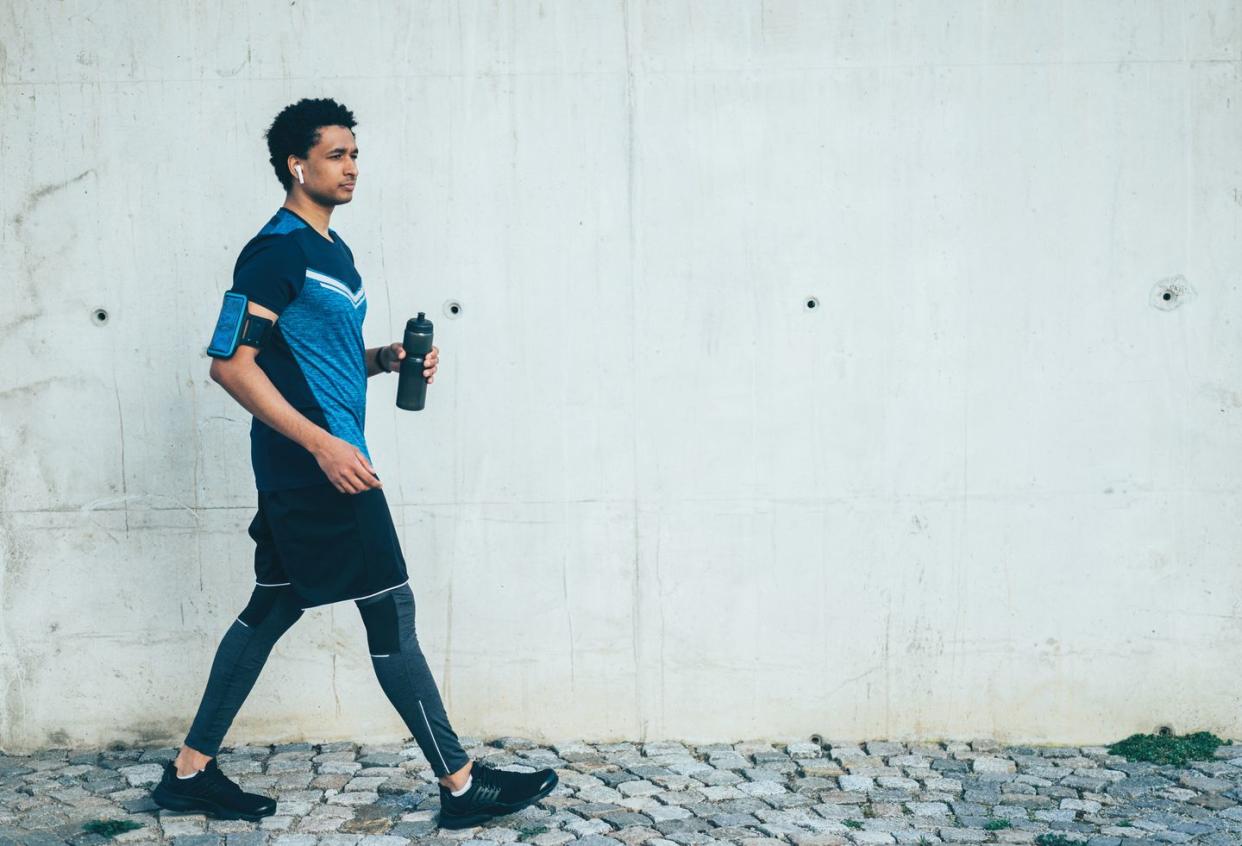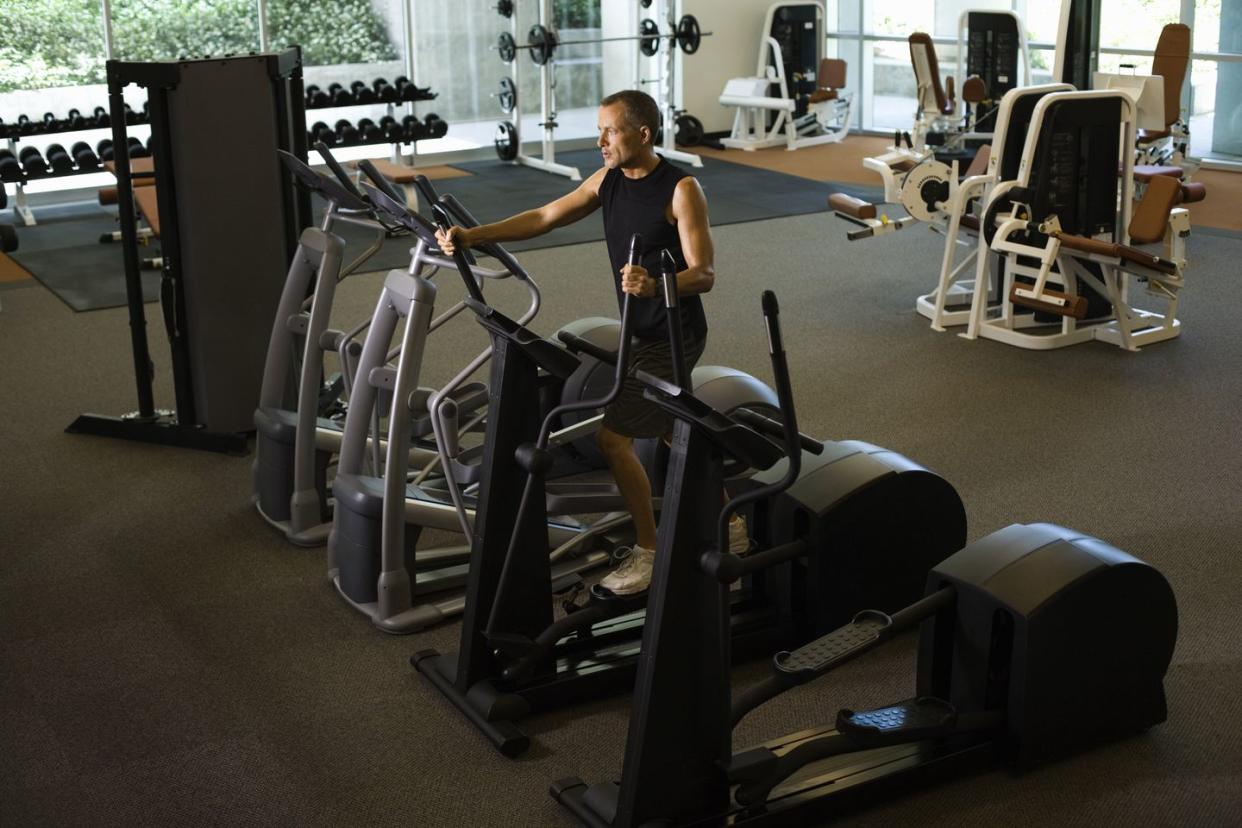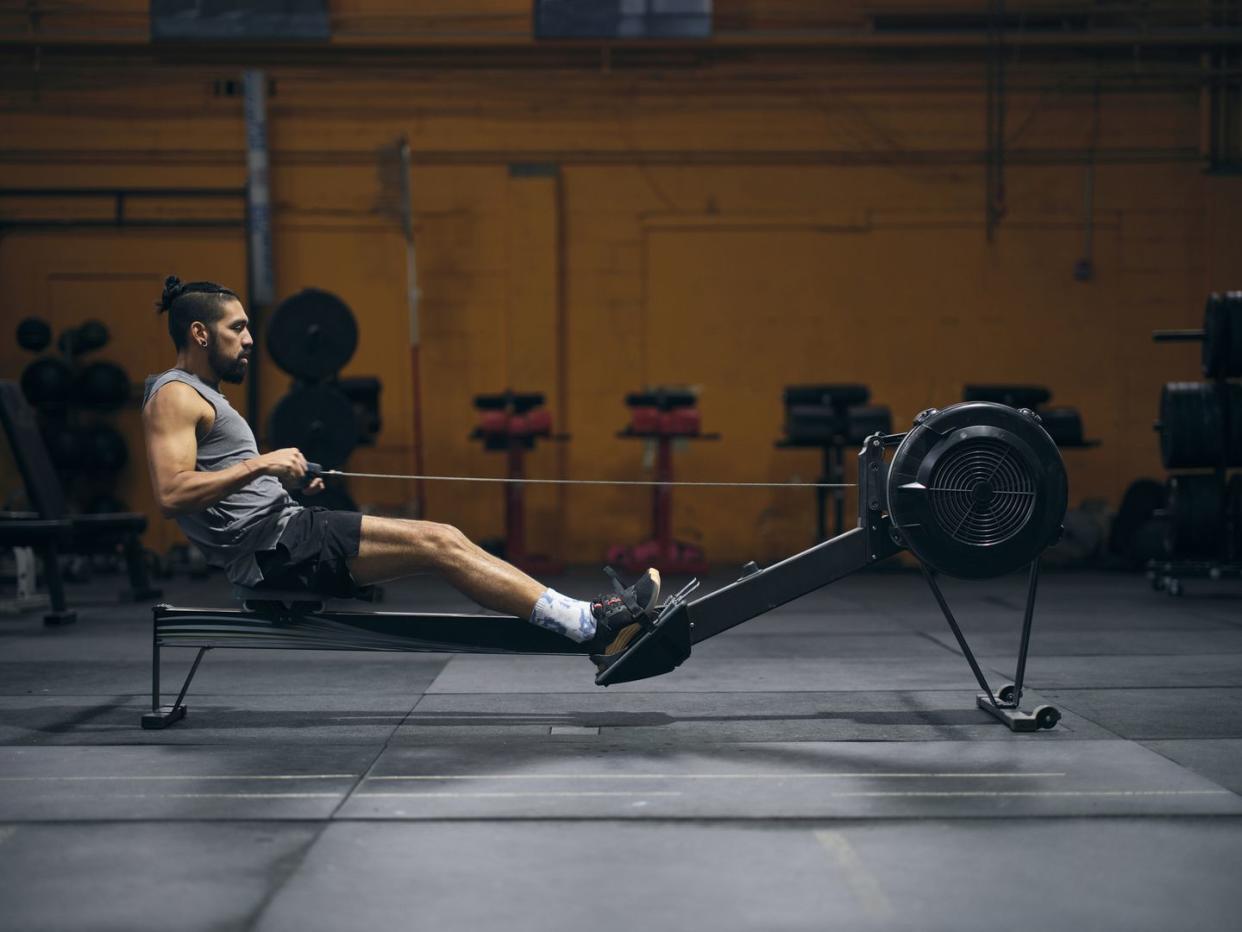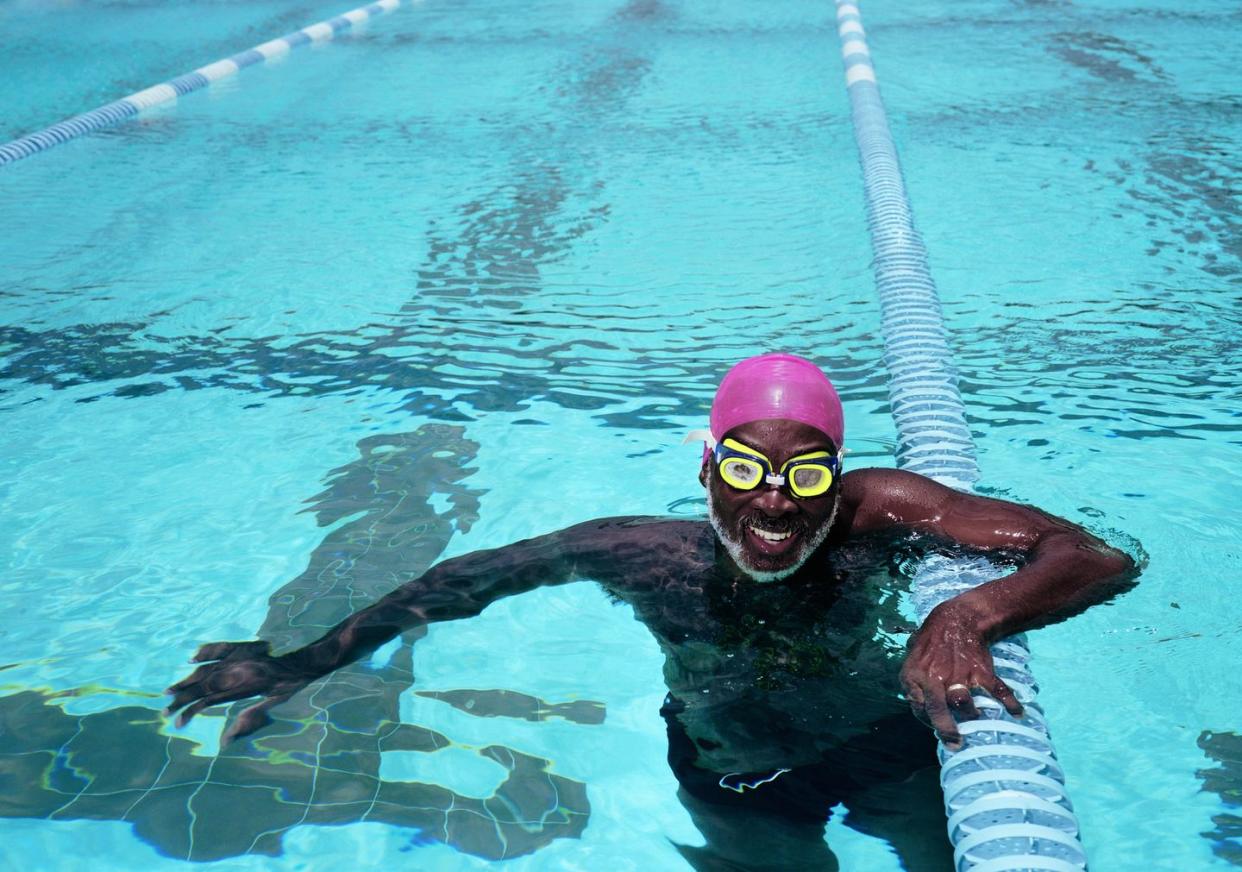What Low Impact Exercises Mean for Your Workouts
"Hearst Magazines and Yahoo may earn commission or revenue on some items through these links."
FOR MANY GUYS, the term "low impact" brings to mind boring workouts. Whether that means joyless cardio sessions on machines or the static series of poses that comes with yoga, barre, or other mostly bodyweight routines, it can be tough to sell a "low" version of any training plan.
The truth, however, is that low impact training is so much more than just low energy routines. In fact, most guys already include low impact exercises in their training without even knowing it. And continuing to include this type of training in your fitness plan is key to reaching just about any goal, as well as decreasing the risk of injury and increasing athletic longevity.
What Is a Low Impact Exercise?
In the context of strength training and fitness, "impact" refers to the amount of stress placed on the joints. High impact activities like running, jumping (e.g., plyometrics), and anything else that involves striking the ground or some other surface with force elevates that stress. That’s not necessarily a bad thing. Indeed, research shows that high impact exercise can boost endurance and cardiovascular fitness, enhance explosive power, and increase bone density. But as you can imagine, such exercise also increases the wear and tear on joints, so if it’s the only thing you do, you’re setting yourself up for aches, pains, and injuries in the long run.
Low impact training, on the other hand, is anything that minimizes powerful contact (and thus wear and tear) on your joints and body. The activities mentioned above (e.g., yoga, Pilates, barre, etc.) obviously count, as does walking, hiking, cycling, and rowing. But what a lot of men don’t realize is that so does resistance training. Your bench presses, squats, and heavyweight rows all count—as long as you execute your lifts with proper form and keep at least one foot on the ground (or other solid, stable, surface) at all times. The tempo you use during your lifts can affect this, too. If you're moving deliberately with control, you'll stay within the realm of low impact movements. If your reps are jerky and out of control, you risk straining your joints.
It should also be noted that there’s really no such thing as “no impact” exercise, despite what some trainers and fitness companies would have you believe. Water-based workouts (swimming, aqua therapy, etc.) are about as close as it comes, but even those exert some impact on your joints.
Bottom line: If you ever encounter a live class, online workout, or fitness plan that claims to be “no impact,” walk (not run) the other way, because you’re being served a bunch of BS.
Benefits of Low Impact Exercises
The most obvious benefit of including low impact exercises into your training plan is reducing your risk of injury or developing niggling pains that can plague your workouts. But again, don’t think that just because an activity is "low impact" means you'll produce minimal results. Low impact cardio like cycling and rowing can be as effective as running when it comes to enhancing cardiovascular fitness and endurance. As for strength training, you likely already know the benefits that can bestow: greater strength, muscle mass, and even increased bone density thanks to the pressure exerted on the bones by loading and muscles contracting against those loads.
Your training program should not be filled with only low or high impact exercises—you need balance for a well-rounded fitness plan. The reason is twofold. First, high impact exercise like plyometrics can enhance your performance in more intense forms of low impact exercise, such as lifting weights, and vice versa. Second, everyday life is a mixture of both high and low impact actions. In short, you need to be able to run and jump as well as lift, cycle, and swim.
Here’s another secret: If you want to get your sweat on without increasing the stress on your joints, you can modify many high impact cardio moves to make them low impact. The trick is to always keep at least one foot on the ground. You can also further minimize the impact of many loaded strength exercises by controlling your tempo, or even taking on unloaded (bodyweight) versions of the movements and increasing your reps per set. Here are a few suggestions to get you started.
Low Impact Exercises You Can Add to Your Workouts
Bodyweight Squat
Why: This strength training staple is a great example of a low impact compound exercise you can use to serve as the bedrock for your bodyweight workouts. Once you start adding load, make sure to move with a controlled tempo to avoid overtaxing yourself.
Split Squat
Why: You'll introduce unilateral training to your low impact workouts here in its most basic form. This can help to correct muscle imbalances and improve stability.
Pushups
Why: The pushup is a classic exercise for a reason. You'll hit your chest, triceps, and shoulders using only your bodyweight—you'll also get some core and mid-back benefit if your form is tight, too. Just make sure to keep your palms on the ground if you're training with low impact exercises in mind.
Plank
Why: Planks challenge you to brace, one of the main functions of your core. Think of this as an exercise that doesn't just work your abs—it also helps you to reinforce bracing, which is important for other exercises, too.
Hollow Hold
Why: The hollow hold is another bracing exercise, which you can use to strengthen your core and reinforce good posture. You can adjust the levers you're working with (your arms and legs) to ratchet up the difficulty.
Inverted Row
Why: Training your back muscles without using ton of weight might feel too difficult if you can't rep out pullups or chinups. The inverted row has a slightly lower barrier to entry, and you can adjust the difficulty by changing the angle you set the bar.
Walking

Why: Walking is a great form of low impact exercise and a sneaky way to add more activity into your routine. Some guys tack on walks to their workouts for weight loss, while others just want to get moving.
Elliptical Machine

Why: The elliptical might get a bad rap from some people, but the cardio machines can be a reliable option to ramp up your heart rate without exposing your body to the pounding that comes with treadmills and road running.
Rowing Machine

Why: Rowing is another reliable machine cardio option, with the added full-body benefits that come with every pulling stroke. This is a machine where tempo matters, though—to keep your activity low impact, make sure to keep a consistent, controlled pace.
Swimming

Why: Water can make movement much less taxing on your body, so swimming and other aquatic activities are certainly examples of low impact exercises.
Cycling

Why: Whether you use a stationary bike for home workouts or ride a road bike out in the world, cycling is a dependable form of low impact exercise that can benefit your cardiovascular health and build up leg muscle, too.
You Might Also Like
